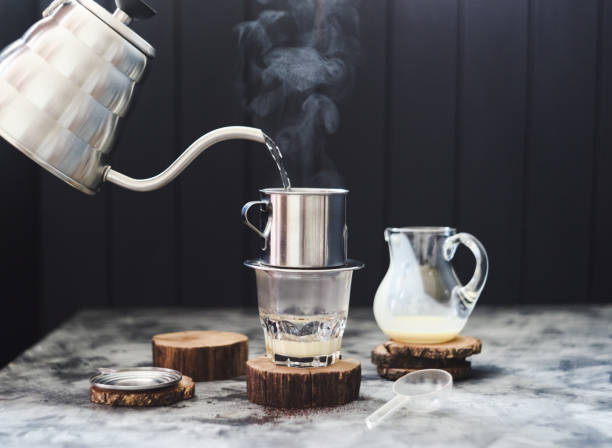Understanding Coffee Machines: Features, Usage, and What to Consider
Coffee machines come in various styles with different features, offering a range of brewing methods to suit individual preferences. Many people explore them based on ease of use, brewing time, and customization options. Learn what to expect and which factors are commonly considered. Discover more in this article.

What are the main types of coffee machines available?
Coffee machines come in several varieties, each catering to different brewing preferences and lifestyles:
-
Drip Coffee Makers: These are the most common and affordable options. They work by dripping hot water over ground coffee beans, collecting the brewed coffee in a carafe below.
-
Single-Serve Coffee Makers: Popular for their convenience, these machines use pre-packaged coffee pods or capsules to brew individual cups quickly.
-
Espresso Machines: Designed for coffee enthusiasts who enjoy strong, concentrated shots of coffee. They force hot water through finely-ground coffee beans under high pressure.
-
French Press: A manual brewing method that steeps coarse coffee grounds in hot water before pressing them down with a plunger.
-
Pour-Over Coffee Makers: Another manual option that involves pouring hot water over coffee grounds in a filter, allowing for precise control over the brewing process.
-
Cold Brew Coffee Makers: Specifically designed for making cold brew coffee by steeping grounds in cold water for an extended period.
What features should I look for in a coffee machine?
When exploring coffee machine features, consider the following:
-
Programmability: Many machines offer programmable settings, allowing you to set brewing times and customize strength.
-
Brew Size Options: Look for machines that can accommodate different cup sizes or carafe volumes to suit your needs.
-
Built-in Grinder: Some high-end machines include a built-in grinder for the freshest possible coffee.
-
Water Filtration: Integrated water filters can improve the taste of your coffee by removing impurities.
-
Temperature Control: Advanced machines may offer precise temperature control for optimal extraction.
-
Milk Frothing: For those who enjoy lattes or cappuccinos, a built-in milk frother can be a valuable feature.
-
Auto-shutoff: This safety feature turns off the machine after a set period of inactivity.
How do I choose the right coffee maker for my needs?
Selecting the perfect coffee maker involves considering several factors:
-
Brewing Capacity: Determine how many cups you typically need to brew at once.
-
Counter Space: Measure the available space in your kitchen to ensure the machine fits comfortably.
-
Ease of Use: Consider how user-friendly the machine is, especially if multiple household members will be using it.
-
Cleaning and Maintenance: Look for machines with easily removable parts for simple cleaning.
-
Personal Taste Preferences: Choose a machine that can brew the types of coffee you enjoy most.
-
Budget: Determine how much you’re willing to spend, as prices can range from budget-friendly to high-end.
What are the most common brewing methods?
Coffee brewing methods vary in technique and resulting flavor profiles:
-
Drip Brewing: Water is heated and dripped over ground coffee, producing a clean, balanced cup.
-
Espresso: High-pressure water is forced through finely-ground coffee, creating a concentrated shot with a layer of crema.
-
French Press: Coarse grounds are steeped in hot water, then pressed down, resulting in a full-bodied brew.
-
Pour-Over: Hot water is manually poured over grounds in a filter, allowing for precise control over extraction.
-
Cold Brew: Coffee grounds are steeped in cold water for 12-24 hours, producing a smooth, less acidic concentrate.
-
Percolation: Water is cycled through grounds multiple times, creating a strong, often bitter brew.
What unique considerations should I keep in mind when choosing a coffee maker?
When selecting a coffee maker, consider these often-overlooked factors:
-
Noise Level: Some machines, especially those with built-in grinders, can be quite loud during operation.
-
Warm-up Time: If you’re often in a rush, look for machines with quick heat-up capabilities.
-
Energy Efficiency: Check for energy-saving features like auto-shutoff or low-power standby modes.
-
Durability: Research the longevity and reliability of different brands and models.
-
Aesthetics: Choose a machine that complements your kitchen decor, as it will likely be a prominent countertop appliance.
-
Versatility: Consider whether you want a machine that can make various coffee drinks or just a simple cup of joe.
How do coffee machine prices compare across different types and features?
Coffee machine prices can vary significantly based on type, features, and brand. Here’s a general comparison of different coffee machine categories:
| Type of Coffee Machine | Entry-Level Price Range | Mid-Range Price Range | High-End Price Range |
|---|---|---|---|
| Drip Coffee Makers | $20 - $50 | $50 - $150 | $150 - $300+ |
| Single-Serve Machines | $50 - $100 | $100 - $200 | $200 - $500+ |
| Espresso Machines | $100 - $300 | $300 - $700 | $700 - $3000+ |
| French Press | $15 - $30 | $30 - $60 | $60 - $150+ |
| Pour-Over Systems | $20 - $40 | $40 - $80 | $80 - $200+ |
| Cold Brew Makers | $20 - $40 | $40 - $80 | $80 - $200+ |
Prices, rates, or cost estimates mentioned in this article are based on the latest available information but may change over time. Independent research is advised before making financial decisions.
Choosing the right coffee machine involves balancing your brewing preferences, lifestyle needs, and budget. By considering the types of coffee machines available, their features, and your personal requirements, you can find the perfect coffee maker to enhance your daily coffee experience. Remember to read reviews, compare options, and, if possible, try out different machines before making your final decision.




